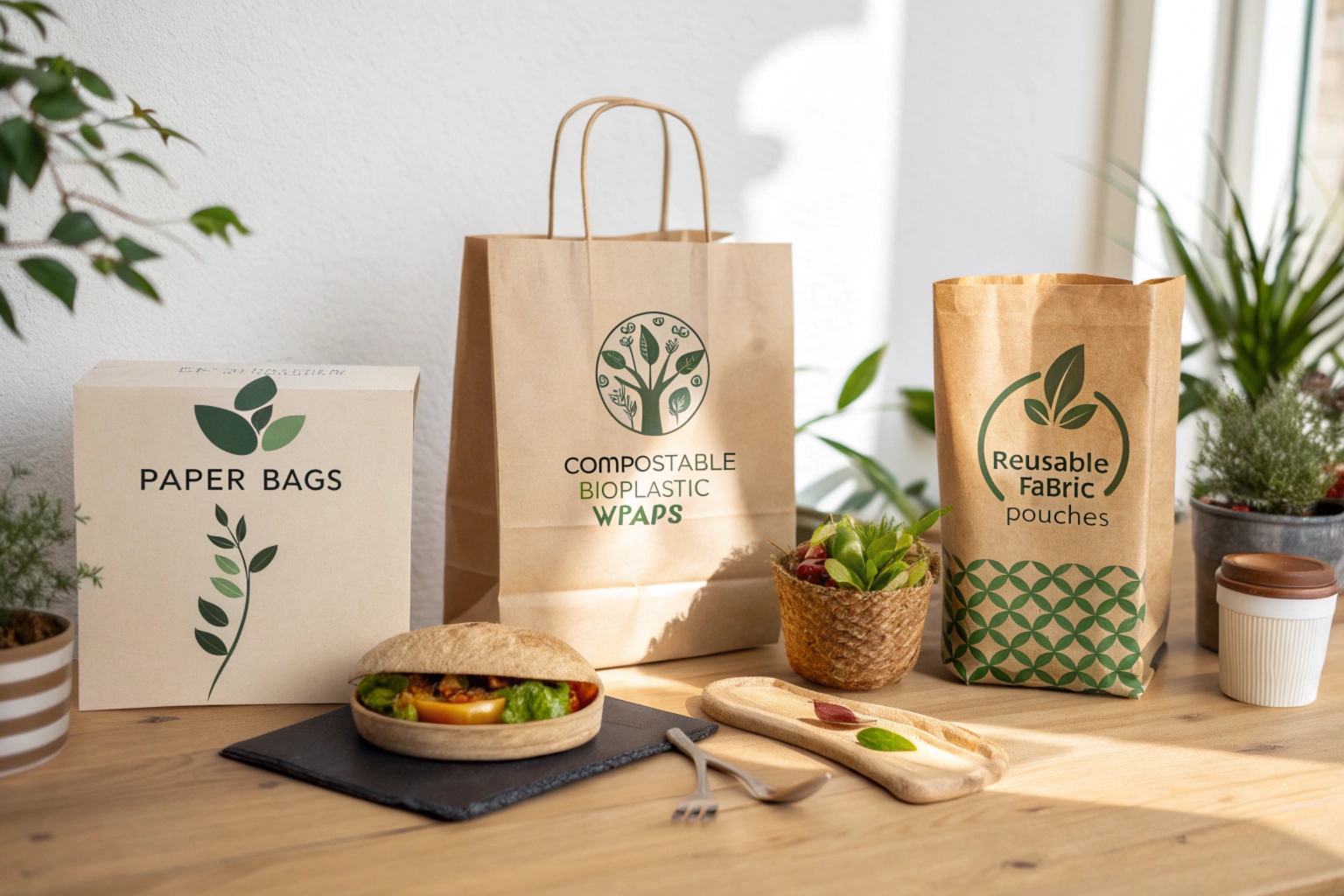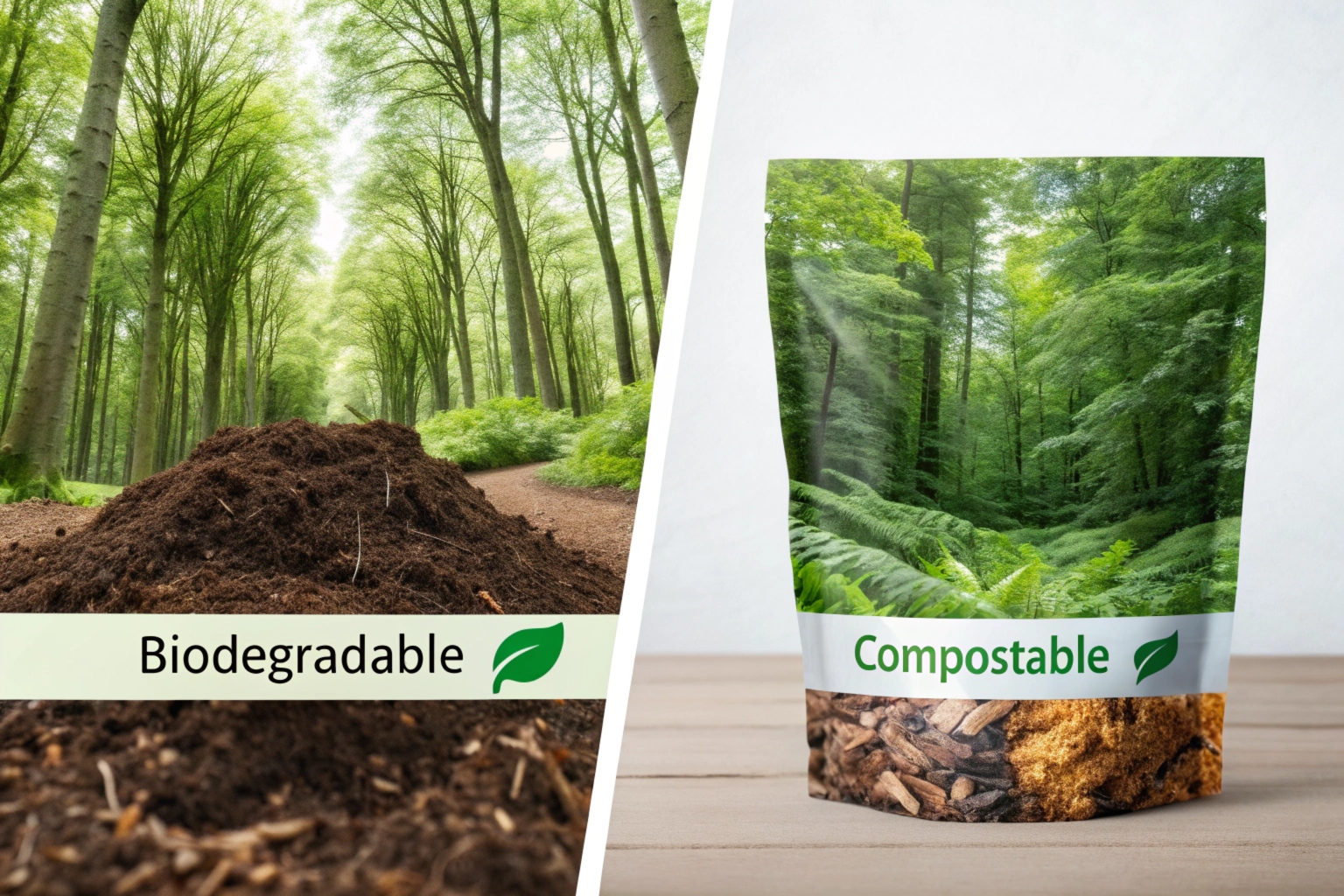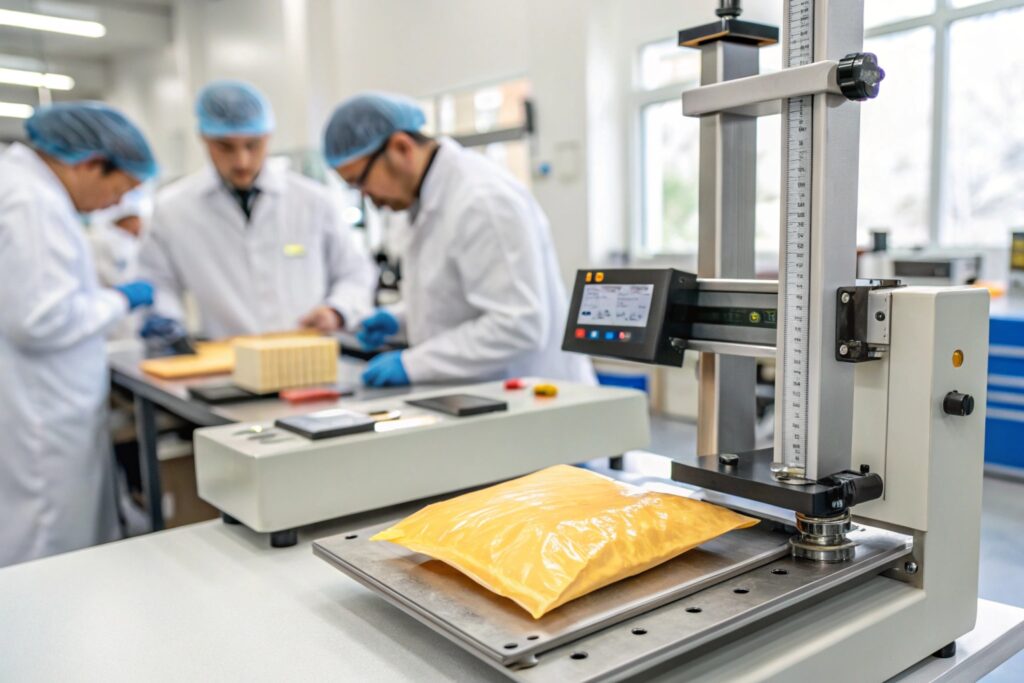Choosing eco-friendly packaging bags can feel overwhelming with so many terms and options available. Yet, making the right choice has a significant impact on the environment and your brand reputation.
To select eco-friendly packaging bags, focus on sustainable materials, production methods, and recyclability. These ensure minimal environmental impact and long-term usability. Understand eco-friendly packaging principles1
By understanding key concepts like biodegradable, compostable, and recyclable packaging, you can make smarter decisions that align with your sustainability goals.
What type of packaging is most environmentally friendly?
When it comes to environmental impact, some packaging types clearly outperform others. Let’s uncover the most eco-friendly options.
The most environmentally friendly packaging is made from recyclable, biodegradable, or reusable materials, such as paper, compostable bioplastics, and fabric. These reduce waste and conserve resources. Explore the most eco-friendly packaging types2

Dive deeper: Exploring eco-friendly packaging options
Paper packaging
Paper is a top choice for eco-conscious brands due to its recyclability and biodegradability.
- Example: Kraft paper bags are ideal for products like coffee or snacks.
- Downside: Paper requires energy to produce and is less durable than plastic.
Compostable bioplastics
These are derived from natural sources like cornstarch and decompose under industrial composting conditions.
- Pro Tip: Use for products with short shelf lives or eco-conscious consumers.
- Caution: Not all facilities support composting bioplastics, so ensure proper disposal channels. Learn about compostable bioplastics3
Reusable fabric bags
Durable and versatile, fabric bags are ideal for reusable packaging campaigns.
- Ideal For: Retail packaging and bulk product storage.
- Challenge: Higher upfront costs compared to disposable options. Find out more about reusable fabric bags4
| Packaging Type | Eco-Benefit | Limitation |
|---|---|---|
| Paper | Recyclable, biodegradable | Less durable |
| Compostable bioplastics | Fully decomposes | Limited composting facilities |
| Reusable fabric bags | Long-term use | High initial cost |
What are the 5 R's of sustainable packaging?
Adopting sustainable practices begins with understanding the 5 R’s framework. These principles guide responsible packaging choices.
The 5 R’s of sustainable packaging are: Refuse, Reduce, Reuse, Recycle, and Rot. Implementing these ensures minimal waste and environmental impact. Apply the 5 R's of sustainability5
Dive deeper: Applying the 5 R's in packaging
1. Refuse
Avoid materials that are unnecessary or harmful, such as single-use plastics.
- Example: Refuse excessive layers of non-recyclable packaging for your products.
2. Reduce
Minimize material usage without compromising functionality.
- Tip: Switch to lightweight designs to save resources and cut costs.
3. Reuse
Design packaging that can be repurposed by customers.
- Example: Offer resealable pouches that extend usability.
4. Recycle
Opt for materials that are easy to recycle globally, like PET plastics or aluminum.
- Insight: Add clear recycling instructions to your packaging. Learn how to create recyclable packaging6
5. Rot
Select compostable materials that can decompose naturally.
- Advice: Partner with composting facilities for end-of-life solutions. Understand the benefits of compostable packaging7
How to make packaging environmentally friendly?
Transforming your packaging into an eco-friendly option involves innovation and commitment to sustainability. Let’s explore the steps.
To make packaging environmentally friendly, use renewable materials, minimize waste, and adopt recyclable or compostable designs. Focus on the entire lifecycle of the packaging. Discover steps to eco-friendly packaging8
What is the difference between green packaging and sustainable packaging?
These terms are often used interchangeably but have distinct meanings. Understanding the difference helps align your packaging strategy with your goals.
Green packaging refers to materials and practices that reduce environmental harm, while sustainable packaging considers the entire lifecycle, including social and economic impacts. Explore green vs. sustainable packaging9
How do I choose eco-friendly packaging?
Selecting the right eco-friendly packaging requires careful evaluation of materials, suppliers, and your product needs.
To choose eco-friendly packaging, assess material sustainability, consider your product’s requirements, and ensure supplier credibility. Balance performance with environmental benefits. Learn how to select eco-friendly packaging10
What is the difference between biodegradable and compostable packaging?
Understanding these terms is key to making informed decisions. Misusing them can lead to greenwashing accusations.
Biodegradable packaging breaks down naturally over time, while compostable packaging requires specific conditions to decompose into nutrient-rich matter. Understand biodegradable vs. compostable packaging11

Conclusion
Choosing eco-friendly packaging bags requires a blend of knowledge, planning, and evaluation. By understanding sustainable materials and adopting responsible practices, you can create packaging solutions that benefit both your brand and the planet.
-
Provides an overview of key considerations when selecting eco-friendly packaging. ↩
-
Explains which packaging materials have the least environmental impact. ↩
-
Explores the properties and limitations of compostable bioplastics. ↩
-
Discusses the advantages and challenges of using reusable fabric bags for packaging. ↩
-
Breaks down the 5 R’s framework for sustainable packaging decisions. ↩
-
Provides tips for making packaging globally recyclable. ↩
-
Highlights how compostable options reduce waste and their limitations. ↩
-
Offers actionable steps to transition to eco-friendly packaging. ↩
-
Compares green packaging with sustainable packaging to clarify their differences. ↩
-
Guides on selecting trustworthy suppliers and eco-friendly materials. ↩
-
Explains how these terms differ to avoid confusion or greenwashing accusations. ↩


